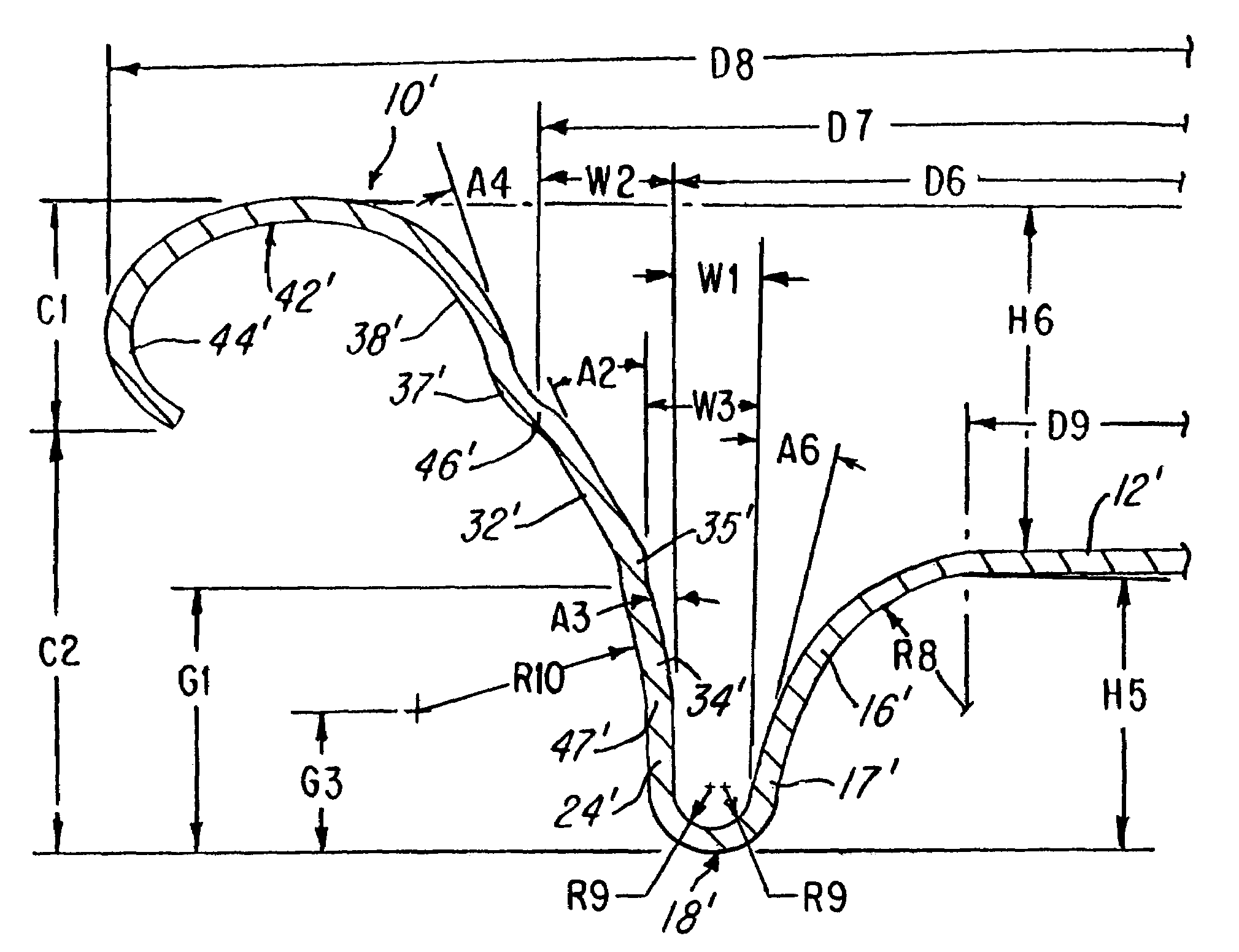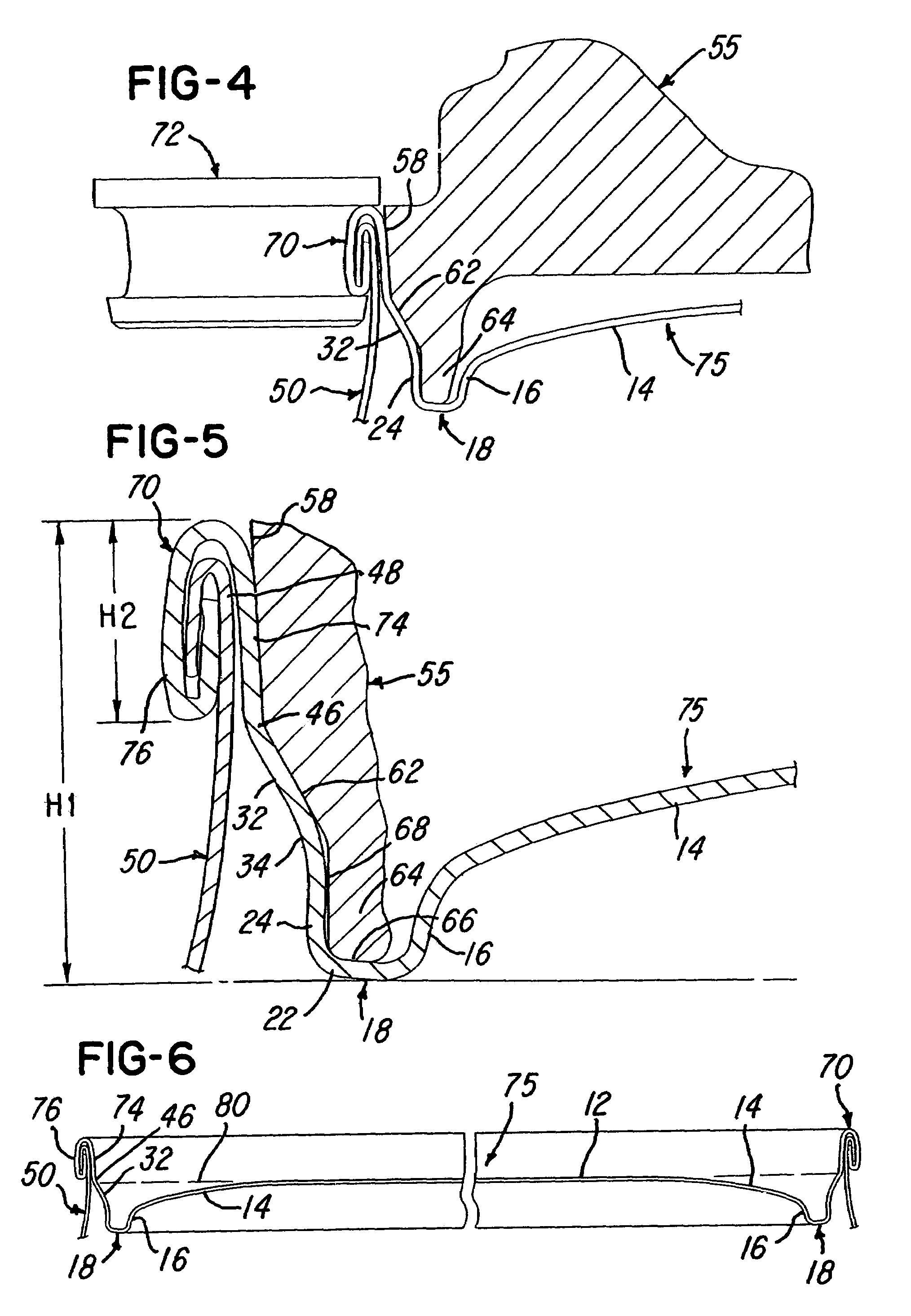Can shell and double-seamed can end
a technology of can end and can shell, which is applied in the field of construction or forming of sheet metal or aluminum can end and can end, can solve the problem that none of the patents provide all the features, and achieve the effect of reducing the blank diameter, increasing the strength/weight ratio of the resulting can end, and increasing the buckle strength of the can end
- Summary
- Abstract
- Description
- Claims
- Application Information
AI Technical Summary
Benefits of technology
Problems solved by technology
Method used
Image
Examples
Embodiment Construction
[0021]FIG. 1 illustrates a one-piece shell 10 which is formed from a substantially circular blank of sheet metal or aluminum, preferably having a thickness of about 0.0085 inch and a blank diameter of about 2.705 inches. The shell 10 has a center axis 11 and includes a slightly crowned center panel 12 with an annular portion 14 extending to a curved panel wall 16. The center panel wall portion 14 and panel wall 16 may be formed by a series of blended curved walls having radii wherein R1 is 1.489 inch, R2 is 0.321 inch, R3 is 0.031 inch, and R4 is 0.055 inch. The curved panel wall 16 has a bottom inner diameter D1 of about 1.855 inch.
[0022]The curved panel wall 16 with the radius R4 extends from an inner wall 17 of a reinforcing rib or countersink 18 having a U-shaped cross-sectional configuration and including a flat annular bottom wall 22 and a generally cylindrical outer wall 24 having an inner diameter D2, for example, of about 1.957 inches. The flat bottom wall 22 of the counter...
PUM
| Property | Measurement | Unit |
|---|---|---|
| angle | aaaaa | aaaaa |
| angle | aaaaa | aaaaa |
| height | aaaaa | aaaaa |
Abstract
Description
Claims
Application Information
 Login to View More
Login to View More - R&D
- Intellectual Property
- Life Sciences
- Materials
- Tech Scout
- Unparalleled Data Quality
- Higher Quality Content
- 60% Fewer Hallucinations
Browse by: Latest US Patents, China's latest patents, Technical Efficacy Thesaurus, Application Domain, Technology Topic, Popular Technical Reports.
© 2025 PatSnap. All rights reserved.Legal|Privacy policy|Modern Slavery Act Transparency Statement|Sitemap|About US| Contact US: help@patsnap.com



